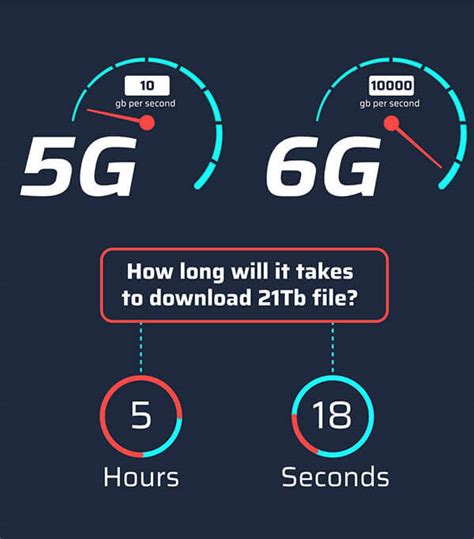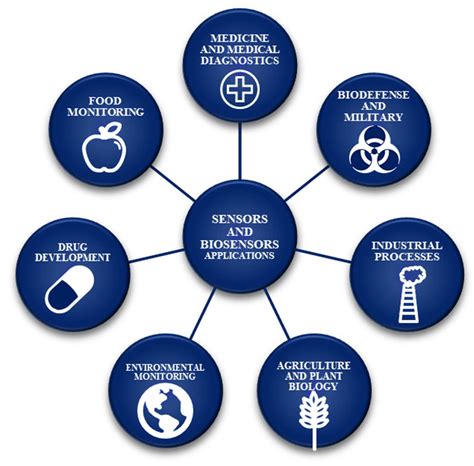Breaking News


Popular News


Discover the potential of 6G network technology, its challenges and opportunities, advanced wireless connectivity, AI and IoT integration, and its potential applications and impact.In the constantly evolving world of technology, it seems that as soon as we grasp the capabilities of the latest innovation, a new breakthrough emerges. The next advancement on the horizon? 6G network technology. In this blog post, we will delve into the upcoming 6G network capabilities and explore the potential it holds for the future of connectivity. From understanding the fundamentals of 6G to the challenges and opportunities it presents, as well as the advanced wireless connectivity, integration of AI and IoT, and the potential applications and impact it may have, we will cover it all. Join us as we embark on a journey to uncover the next evolution in communication technology and its potential to revolutionize the way we connect and interact with the world around us.
Contents

By now, most of us are familiar with 2G, 3G, 4G, and the currently prevalent 5G networks. But what exactly is 6G and how does it differ from its predecessors? 6G refers to the sixth generation of wireless technology, which is expected to build upon the capabilities of 5G and take connectivity to a whole new level.
One of the key features of 6G network is its potential to offer significantly faster data speeds and lower latency, enabling instantaneous communication and real-time interactions. Additionally, 6G is anticipated to support a massive increase in the number of connected devices, paving the way for the widespread adoption of IoT applications and advanced technologies. With projected speeds of up to 1 terabyte per second, 6G could revolutionize the way we experience and utilize wireless connectivity.
As we look towards the future, it’s important to note that 6G is still in the conceptual stage, with standardization efforts and technical advancements underway. However, the potential implications of 6G are vast, ranging from enhanced virtual and augmented reality experiences to the enablement of futuristic technologies such as autonomous vehicles and smart cities. In essence, 6G aims to not only redefine wireless connectivity, but also to empower the next wave of innovation and digital transformation.

Challenges and Opportunities
In the rapidly evolving world of technology, the development and implementation of a 6G network poses both challenges and opportunities. As we look ahead to the future, it is important to consider the obstacles that may arise, as well as the potential benefits that this advanced wireless connectivity can bring.
One of the main challenges in the deployment of 6G network is the infrastructure requirements. The technology demands a significant upgrade in infrastructure, including the installation of new hardware and antennas. This can be a costly and time-consuming process, creating a barrier to widespread adoption. Additionally, there are concerns about the environmental impact of building and maintaining this infrastructure, which must be carefully managed.
Despite these challenges, the opportunities presented by 6G network are vast. The integration of AI and IoT technologies will enable unprecedented levels of connectivity and data processing, paving the way for revolutionary advancements in various industries. From smart cities to autonomous vehicles, the potential applications and impact of 6G network are boundless, offering endless possibilities for innovation and growth.

Advanced wireless connectivity refers to the latest developments in wireless technology that have significantly increased the speed and reliability of wireless communication. With the introduction of 5G and the impending arrival of 6G networks, the capabilities of wireless connectivity have reached new heights. These advancements have paved the way for a wide range of applications across various industries, from healthcare to manufacturing and beyond.
One of the key features of advanced wireless connectivity is the ability to support ultra-high-definition streaming and virtual and augmented reality experiences. This means that users can enjoy crystal-clear video content and immersive virtual environments without experiencing lags or disruptions. Furthermore, advanced wireless connectivity enables seamless connectivity for IoT devices, allowing for real-time data processing and analysis.
| Benefits of Advanced Wireless Connectivity |
|---|
| 1. Faster Data Transfer |
| 2. Enhanced Reliability |
| 3. Support for Emerging Technologies |
In conclusion, advanced wireless connectivity has the potential to revolutionize the way we communicate, collaborate, and innovate. The benefits of faster data transfer, enhanced reliability, and support for emerging technologies make it a crucial enabler for the next wave of technological advancements and digital transformation.

One of the most exciting developments in the tech industry is the integration of Artificial Intelligence (AI) and the Internet of Things (IoT). This integration is revolutionizing the way we interact with technology, as well as the way technology interacts with the world around us. With AI, devices can learn and adapt to their surroundings, making them more efficient and user-friendly. When combined with the IoT, these AI-powered devices can communicate with each other and work together to create a seamless, interconnected system.
AI and IoT integration has the potential to transform countless industries, from healthcare and transportation to manufacturing and agriculture. By harnessing the power of AI and IoT, businesses can improve efficiency, reduce costs, and provide better services to their customers. For example, in the healthcare industry, AI-powered IoT devices can monitor patients’ vital signs in real-time, alerting healthcare providers to any potential issues before they become serious. In the agriculture industry, these devices can be used to monitor and analyze soil moisture levels, temperature, and other environmental factors to optimize crop yield.
As with any new technology, there are challenges that come with integrating AI and IoT. One of the biggest challenges is ensuring the security and privacy of the data collected and shared by these interconnected devices. With more devices connected to the internet, there is an increased risk of malicious attacks and data breaches. Additionally, there are ethical concerns surrounding the use of AI-powered devices, such as the potential for bias and discrimination in decision-making processes. However, with proper regulations and safeguards in place, the benefits of AI and IoT integration far outweigh the risks.

The potential applications and impact of 6G network are vast and far-reaching. As the next generation of wireless connectivity, 6G has the potential to revolutionize various industries and technologies. One potential application of 6G network is in the healthcare industry. With its ultra-reliable and ultra-low latency communication capabilities, 6G can enable remote surgery and telemedicine, providing access to healthcare services in remote or underdeveloped areas. Another potential application is in the transportation sector, where 6G can support autonomous vehicles and enhance road safety through real-time communication and data exchange.
Furthermore, the impact of 6G network extends to the manufacturing industry, where it can enable the implementation of smart factories and advanced automation technologies. By leveraging 6G connectivity, manufacturers can enhance productivity, efficiency, and flexibility in their operations. In addition, 6G network has the potential to revolutionize entertainment and gaming experiences, with its high-speed and high-capacity connectivity, enabling immersive virtual and augmented reality experiences.
In conclusion, the potential applications and impact of 6G network are diverse and transformative, spanning across various industries and technologies. From healthcare and transportation to manufacturing and entertainment, the capabilities of 6G network are poised to bring about significant advancements and innovations, ushering in a new era of connectivity and technological possibilities.

What is 6G network?
6G network is the next generation of wireless technology that is expected to surpass the capabilities of 5G, offering faster speeds, lower latency, and greater capacity for connected devices.
What are the potential advantages of 6G network?
Some potential advantages of 6G network include faster download and upload speeds, better support for Internet of Things (IoT) devices, improved virtual and augmented reality experiences, and more reliable communication for mission-critical applications.
How is 6G different from 5G?
6G is expected to be several times faster than 5G, with lower latency and greater capacity. It will also likely introduce new technologies such as terahertz frequencies and intelligent reflecting surfaces to enhance connectivity.
When can we expect 6G networks to be deployed?
Although it’s still in the early stages of development, 6G networks are projected to start rolling out commercially by the end of the decade, with full deployment expected in the 2030s.
What are the challenges in developing 6G technology?
Some challenges in developing 6G technology include the need for new infrastructure, spectrum allocation, energy efficiency, and addressing security and privacy concerns in the increasingly connected world.
What impact will 6G have on industries and sectors?
6G has the potential to revolutionize various industries such as healthcare, transportation, manufacturing, and entertainment by enabling new applications and services that require ultra-reliable, low-latency communication.
How can individuals prepare for the arrival of 6G network?
Individuals can prepare for the arrival of 6G network by staying informed about the latest developments, understanding the potential use cases, and acquiring the necessary skills to leverage the new capabilities that 6G will offer.